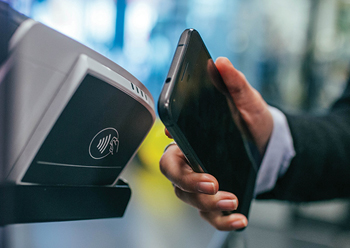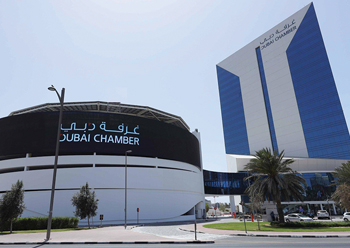.jpg)
.jpg) Dubai has built a strong industrial base in metals and high-value downstream processing sectors
Dubai has built a strong industrial base in metals and high-value downstream processing sectors
The UAE Emirate of Dubai, a trend-setter in the region in diversification and innovation, is set to focus on the industries of the future, including space, biotech, medi-tech and other sectors that are enabled by Fourth Industrial Revolution technologies, as it looks to strengthen its industrial ecosystem.
The emirate sees that developing its manufacturing sector will be an important element in reducing economic vulnerabilities especially to external shocks such as energy price volatility and supply chain issues. It also makes the economy more self-reliant and reduces dependence on imports, which is positive for its long-term trade dynamics, says an Emirates NBD research report.
Additionally, the plan will focus on SME growth by providing more attractive financing options for those enterprises. Dubai is well positioned to capitalise on those longer term national industrial plans particularly given, its logistics and overall infrastructure readiness, says the report.
.jpg) |
|
Manufacturing is a key component of diversification |
Manufacturing plays an increasingly important role in Dubai’s economic structure with the emirate well positioned for the next stage of development, as its growth dynamics are starting to recover from the Covid-19 impact. Dubai has built a strong industrial base in metals and high-value downstream processing sectors through companies like Ducab and Emirates Global Aluminum (EGA).
At a wider policy level, the core driver of the UAE and Dubai’s long term industrial and manufacturing goals is Operation 300bn which was launched in March 2021. The plan is a 10-year comprehensive strategy which aims to empower and expand the industrial sector to become the driving force of a sustainable economy, increasing its contribution to GDP from the current AED133 billion to AED 300 billion by 2031.
The Ministry of Industry and Advanced Technology will lead the strategy and roll out programmes and initiatives to support 13,500 industrial small and medium enterprises. The strategy is centered primarily on future industries making use of advanced technologies and the Fourth Industrial Revolution (4IR) solutions and applications.
The strategy will also focus sustainable development. It aims to add value to local output and increase the competitiveness of UAE exports globally. The plan also aims to offer a competitive package of facilities and incentives with that attracts talents and the human capital needed to achieve those goals.
The focus on manufacturing, which contributed 9.7 per cent to Dubai's GDP in H1 2021, comes as the emirate registered a strong recovery from the Covid-19 impact.
Dynamics rebound
For the full year 2021, Emirates NBD estimates Dubai’s economy grew around 5.5 per cent — an upward revision from its earlier forecast of 4 per cent. While growth is likely to slow somewhat in 2022, Dubai’s economy will continue to recover from the pandemic-related contraction in 2020, it predicts.
Dubai’s non-oil private sector economy continued to mark robust growth in April, led by a sharp increase in output levels. The seasonally adjusted S&P Global Dubai Purchasing Managers' Index (PMI) registered at 54.7 in April, down from 55.5 in March, its first drop since January. However, the indicator stayed above the 50 no-change mark for the 17th consecutive month, indicating a solid upturn in business conditions across the non-oil private sector.
Uniquely positioned as a key global axis for trade, Dubai is well positioned for its next stage of growth, as it transitions from hard infrastructure build-up towards a stronger focus on policies “soft-infrastructure”, the report said.
Looking at the post pandemic recovery, the research note said that trade, local manufacturing, e-commerce, fintech, a recovering real estate market and a rebounding tourism sector are also critical to the long-term economic potential of the emirate. “Dubai’s economy is well positioned to successfully transition on to the next phase of its economic cycle. Capacity uptake will be a key measure of that success,” it said.
“We will see an increasing shift from physical infrastructure build-up to policy measures that hone and deliver on the 'soft infrastructure' needed to support the emirate’s long term growth strategies,” Shady Elborno - Head of Macro Strategy, Emirates NBD Research and the author of the report said.
Trade infra, an 'Enabler'
The study notes that the emirates physical infrastructure has helped position Dubai uniquely as a key global axis for trade, while policy execution and a government focused on service excellence, offered businesses operating in the region the needed framework to operate efficiently.
“While metrics across most economic parameters are yet to reach pre-pandemic levels, Dubai sits in a good place with its high-quality infrastructure capacity, and proactive policies that keep the economy open for business as the pandemic continues to evolve,” the report said.
Dubai’s investment in trade-enabling infrastructure like its seaports and airports, allows it to be a crucial East-West transshipment point, similar to other trade-based economies like Singapore and Hong Kong, aiding its post-pandemic recovery, he said in the report.
The geographic axis of Dubai in addition to its prowess as regional trade and logistics hub have made it among the most strategic trade corridors the Middle East and North Africa (Mena) region. Its seaports are the most developed in the region with Dubai’s Jebel Ali port the 11th busiest in the world, and the largest container port between Singapore and Rotterdam with an annual TEU throughput of around 15mn, an annual capacity of 19mn TEU, and a draught of 16m at some berths. The port handles almost 60 per cent of the cargo that is destined for the Gulf Cooperation Council.
Furthermore, Dubai’s diversified portfolio of free trade zones covers a wide range of sectors from light and heavy industries, technology, and financial services. This ensured the build-up of a critical mass of businesses across a wide range of sectors, and this in turn drives the attractiveness of Dubai as a regional business hub for many multinationals and has been a key reason why many global corporates see Dubai as a natural base for operations into the immediate region and into Africa (through strong maritime and air links).
“Building outsized capacity in infrastructure has come to define the emirate’s drive to diversify,” he noted.
Non-oil trade surges
According to the Emirates NBD report, Dubai’s non-oil external trade surged 31 per cent in H1 2021 to reach AED722.3 billion from AED550.6 billion in H1 2020, as the economy’s trade enabled infrastructure positioned it to realise gains from the rebound in global and regional trade. Exports grew 45 per cent year on year (yoy) in H1 2021 to AED109.8 billion from AED75.8 billion. Imports rose by 29.3 per cent yoy to AED414 billion from AED320 billion. Re-exports grew 28.3 per cent yoy to AED198.6 billion from AED154.79 billion.
China maintained its position as Dubai’s biggest trading partner in H1 2021 with AED86.7 billion worth of trade compared to AED66.3 billion in H1 2020, up 30.7 per cent yoy.
Trade with India grew 74.5 per cent yoy to AED67.1 billion from AED38 billion. Trade with the US reached AED32 billion up 1 per cent yoy from AED31.7 billion. Saudi Arabia came fourth with AED30.5 billion up 26 per cent yoy from AED24.1 billion, followed by Switzerland with AED24.8 billion up 2.3 per cent yoy from AED24.2 billion. The total share of the five biggest trade partners in H1 2020 amounted to AED241.21 billion compared to AED185.06 billion in H1 2020, up 30.34 per cent yoy.
Direct trade in H1 2021 totalled AED445.6 billion, up 39.5 per cent yoy, while trade through free zones reached AED272 billion, up 19.8 per cent yoy. Airborne trade accounted for AED364.8 billion, jumping 46.15 per cent yoy from AED249.6 billion in H1 2020. Sea trade reached AED247.5 billion, up 16.7 per cent yoy compared to AED212.18 billion, while land trade touched AED110 billion, up 23.7 per cent yoy compared to AED88.8 billion.
The report further makes an important observation: it is estimated that 4,000 Chinese companies are registered in emirate alone. In fact, the UAE, and especially Dubai plays an important role in China’s Belt & Road initiative, given its position as the leading regional logistics hub, through maritime, air and land logistics capabilities. The emirate’s trade-ready infrastructure is crucial to enabling Chinese goods transiting through the immediate and near region and into Africa, the research paper noted.
e-commerce ecosystem
E-commerce is emerging as a key platform for Dubai’s important retail and trade sectors, points out the Emirates NDB report. And there are several drivers that define the success of e-commerce in the UAE and Dubai. First, demographics in the UAE with a younger population and high per capita GDP, is an important driver for product take-up and appetite for digital channels to access shopping. High internet penetration, with close to 99.2 per cent of the population having access to internet, and the role the internet plays in a consumer’s path to purchase – from discovery, research, to buying.
“It is the combination of factors ranging from the available infrastructure, the demographics, and the extremely high internet penetration, that make the UAE the region’s leading e-commerce market,” the report noted.
Logistics in Dubai is a very important enabler of the e-commerce boom especially that experienced post Covid-19. “Given the emirate’s outsized position as a regional logistics and transport center it was able to mobilise significant resources across its transport ecosystem to address consumer and business needs, during and right after lockdowns,” the report said.
While delivery companies initially struggled to fulfil orders and delivery costs increased across the board, those issues were quickly ironed out, and almost all retailers now offer very efficient time-sensitive delivery options.











